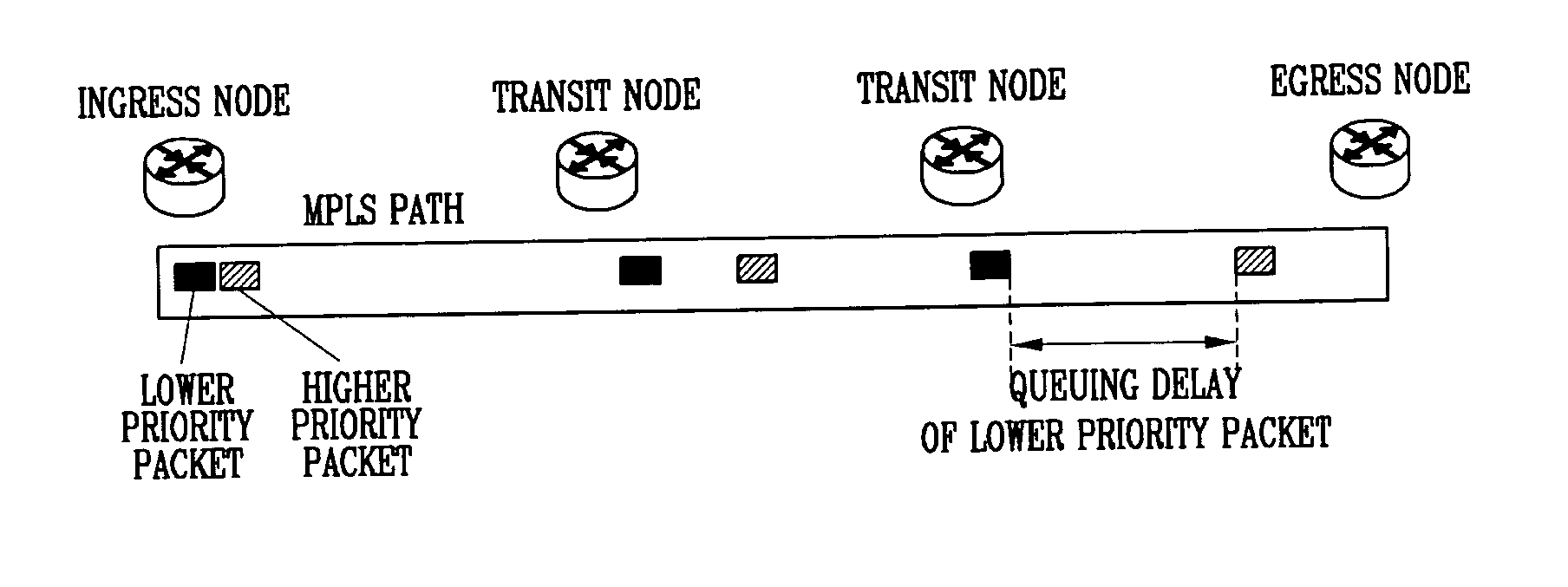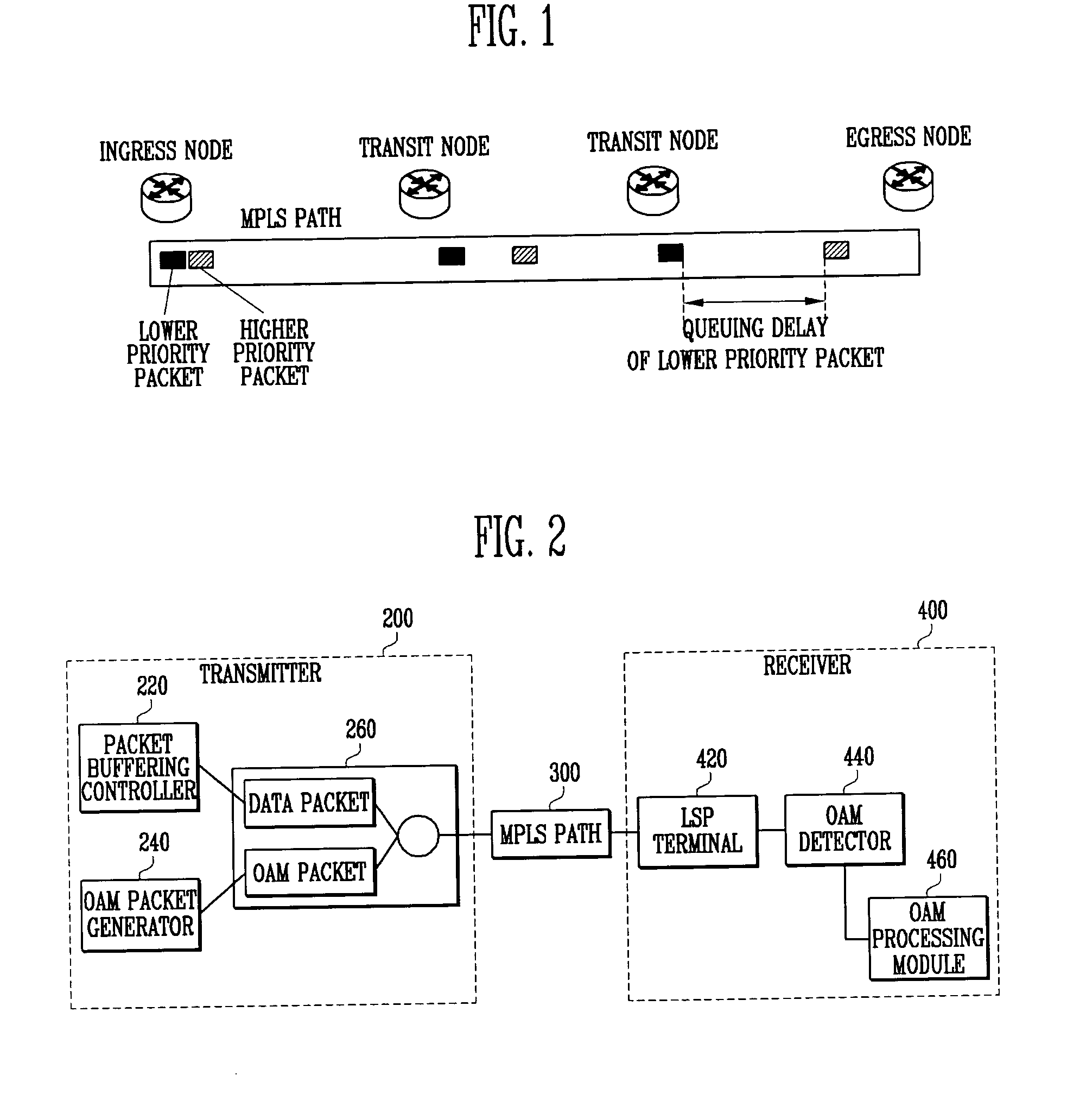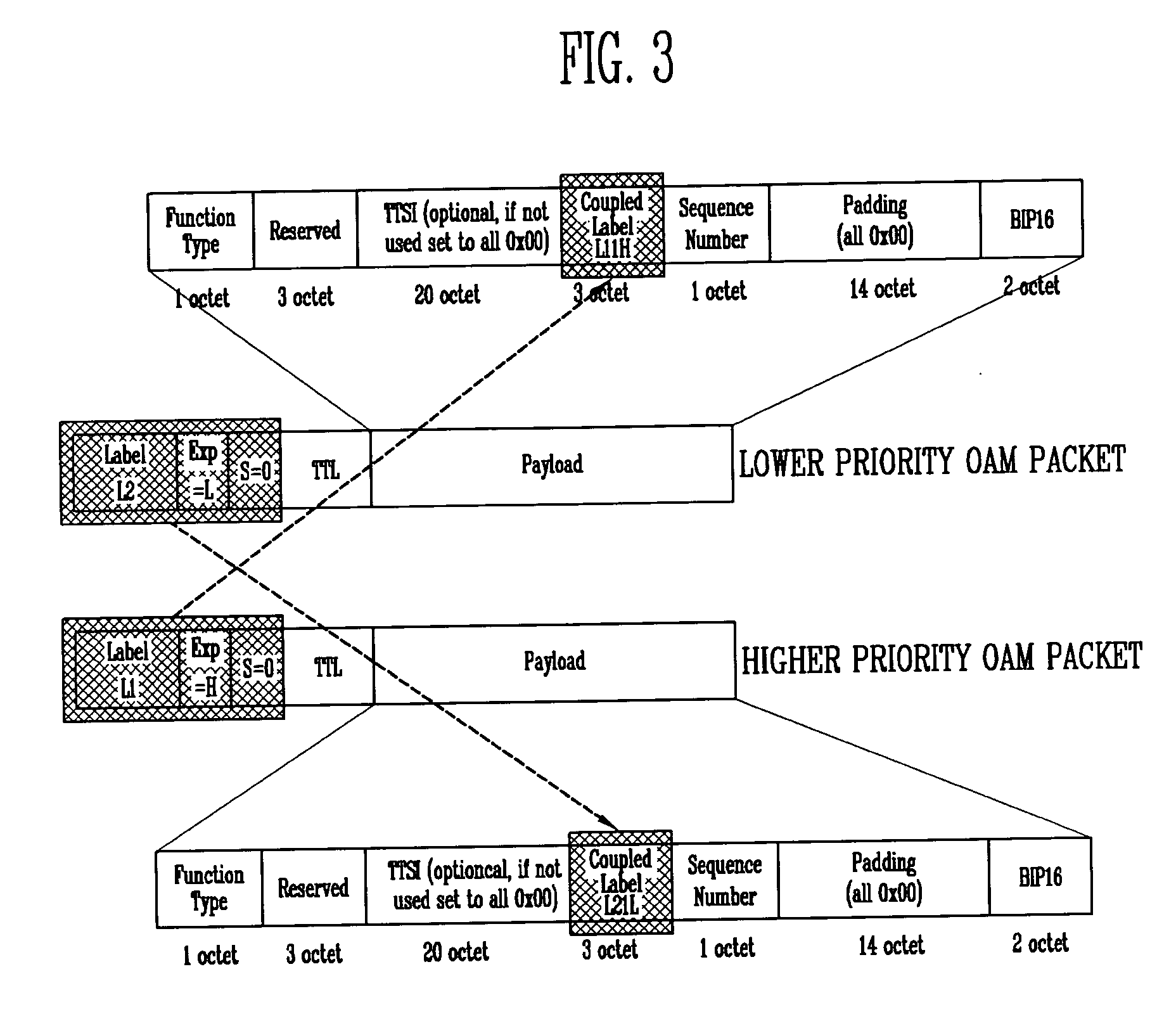Method for measuring end-to-end delay in asynchronous packet transfer network, and asynchronous packet transmitter and receiver
a packet transfer network and end-to-end delay technology, applied in the field of measuring end-to-end delay in asynchronous packet transfer network, can solve the problems of difficult application to asynchronous networks such as ethernet, conventional delay measurement method, and inability to provide qos-guaranteed service implementation by existing internet structures, etc., to achieve convenient measurement of delay value and convenient
- Summary
- Abstract
- Description
- Claims
- Application Information
AI Technical Summary
Benefits of technology
Problems solved by technology
Method used
Image
Examples
Embodiment Construction
[0024] Hereinafter, an exemplary embodiment of the present invention will be described in detail. However, the present invention is not limited to the embodiments disclosed below, but can be implemented in various types. Therefore, the present embodiment is provided for complete disclosure of the present invention and to fully inform the scope of the present invention to those ordinarily skilled in the art.
[0025] The end-to-end delay of a packet on a virtual circuit is generally divided into three types: a packet processing delay, a propagation delay, and a queuing delay caused by the buffering of a transfer node.
[0026] The packet processing delay is a delay of parsing and processing information in the header of a packet that is received from each node, and the propagation delay is a delay that constantly increases as a distance between an ingress node and an egress node is increased. Both the packet processing delay and the propagation delay account for a fixed percentage of the ...
PUM
 Login to View More
Login to View More Abstract
Description
Claims
Application Information
 Login to View More
Login to View More - R&D
- Intellectual Property
- Life Sciences
- Materials
- Tech Scout
- Unparalleled Data Quality
- Higher Quality Content
- 60% Fewer Hallucinations
Browse by: Latest US Patents, China's latest patents, Technical Efficacy Thesaurus, Application Domain, Technology Topic, Popular Technical Reports.
© 2025 PatSnap. All rights reserved.Legal|Privacy policy|Modern Slavery Act Transparency Statement|Sitemap|About US| Contact US: help@patsnap.com



